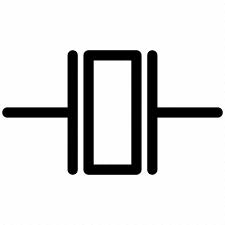
Naturally Occuring
Quartz crystals occur commonly in nature and are six sided crystalline structures of silicon dioxide (SiO2). SiO2 is very common but has more than one configuration. Common beach sand is often just an amorphous form of silicon dioxide, whereas quartz is SiO2 that has experienced long periods of extreme temperature and pressure in the earth, forming very regularly shaped hexagonal crystals. Pure quartz is translucent and even transparent, but natural quartz crystals often have impurities that color the quartz, making them beautiful (although inexpensive) gemstones. Traditionally, crystal balls (for seeing the future) were fashioned out of transparent or translucent quartz.
The Beating Heart of Electronic Devices
The basis for using quartz crystals in electronics is piezoelectricity, which was first demonstrated in 1880 by the Curie brothers. When pressure is applied to quartz, the hexagonal crystal structure is ever so slightly displaced, unbalancing the internal positive and negative electronic charges and thus building up an electric field. Conversely, when an electric field is applied to quartz, a mechanical strain will change the dimensions of the quartz, and this is called the inverse piezoelectric effect. When a voltage is applied to electrodes plated on a properly shaped and prepared quartz crystal, the crystal can be made to oscillate at a resonant frequency. While several other types of crystals also exhibit piezoelectricity, quartz has uniquely good properties to allow the manufacture of extremely stable resonators.
Quartz is relatively abundant in nature and easy to grow in a very pure form. What sets it apart from other piezoelectric crystals is that it can be made to vibrate in very controlled and stable ways. Thus, a properly fashioned quartz resonator can act as an ultra-stable mechanical frequency source that can be coupled to an electronic oscillator circuit.
The reasons for its superb stability start with the very high “Q” of quartz crystal resonators. “Q” (named for quality factor) is a measurement of the energy lost per cycle, which is extraordinarily low for quartz. The higher the “Q”, the higher the frequency stability and accuracy of a resonator. On top of that, quartz has a low temperature coefficient; in other words, the frequency changes only marginally as temperature changes. And on top of that, scientists have been able to calculate and experimentally verify several “zero temperature coefficient” cuts. That is, by cutting quartz bars at certain very precise angles with respect to the crystal axes, quartz resonators can be made that exhibit extremely low frequency change over temperature.
Ultimately, quartz crystals can be manufactured that maintain frequency to a few PPM (parts per million) or even to a few PPB (parts per billion) over time, temperature and many other environmental conditions.
Types of Crystal Oscillators
Electronic circuits need to be precisely timed in order to stay in rhythm and operate efficiently. As a consequence, quartz crystal oscillators have become essential components in virtually all electronic devices and billions are manufactured every year. Frequencies include a 32.768 kHz “watch crystal” frequency, but mostly they are in the 10 MHz to 200 MHz range. Improvements are always being made in size reduction, tighter stabilities and higher frequencies. So, at the heart of all of our most sophisticated electronic devices there is always a mechanically beating heart made out of quartz.
The most common types of crystal oscillators are referred to by using the following acronyms. In these acronyms, the letter “X” stands for crystal:
XO: a simple Crystal Oscillator, which can have stability as tight as ± 50 PPM over the military temperature range of -55C to +125C.
TCXO: a Temperature Compensated Crystal Oscillator, with stability as tight as ± 1 PPM or less.
OCXO: an Oven Controlled Crystal Oscillator, with stabilities in the 1 to 50 PPB range.
MCXO: a Microcomputer Compensated Crystal Oscillator, with stabilities in the 1 to 50 PPB range but using much less power consumption than OCXOs.
VCXO: a Voltage Controlled Crystal Oscillator, with a “pullable” frequency that can be used to phase lock to another frequency source.
SAW: a Surface Acoustic Wave Oscillator, which can operate up to 1 or 2 GHz frequencies.
Learn More
For the engineers out there who want to dig much deeper into the basic science and technology of time and frequency control, I highly recommend that you read this presentation by John R. Vig: “Quartz Crystal Resonators and Oscillators for Frequency Control and Timing Applications.”
In future posts on this blog, we will dig into specific products and topics on the cutting edge of our industry.